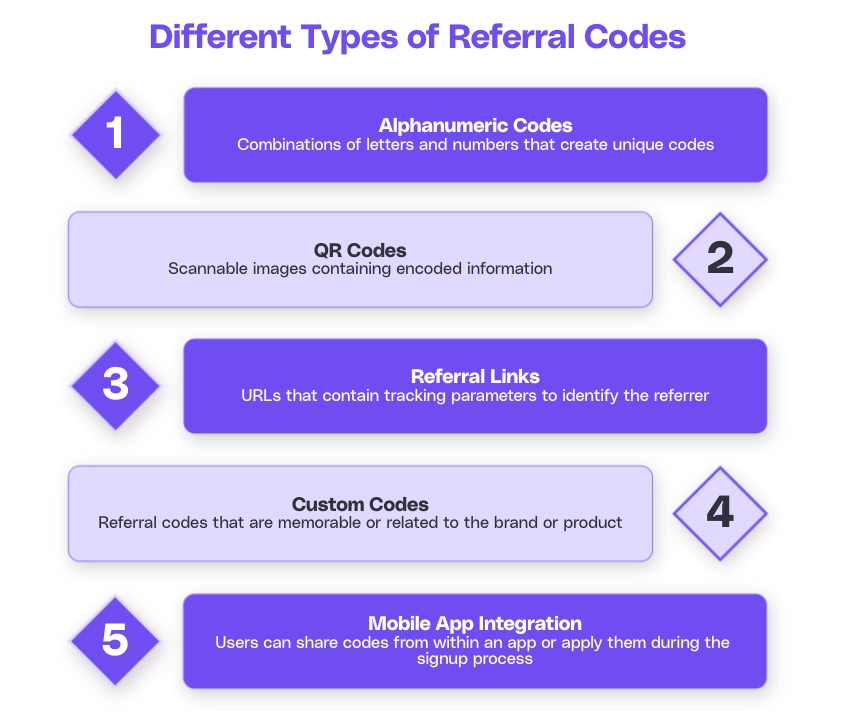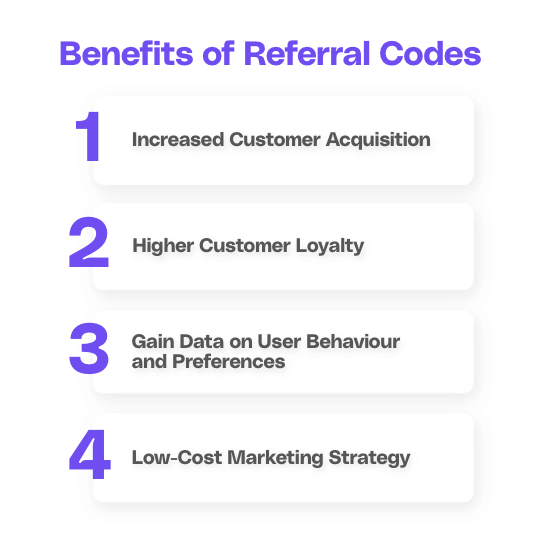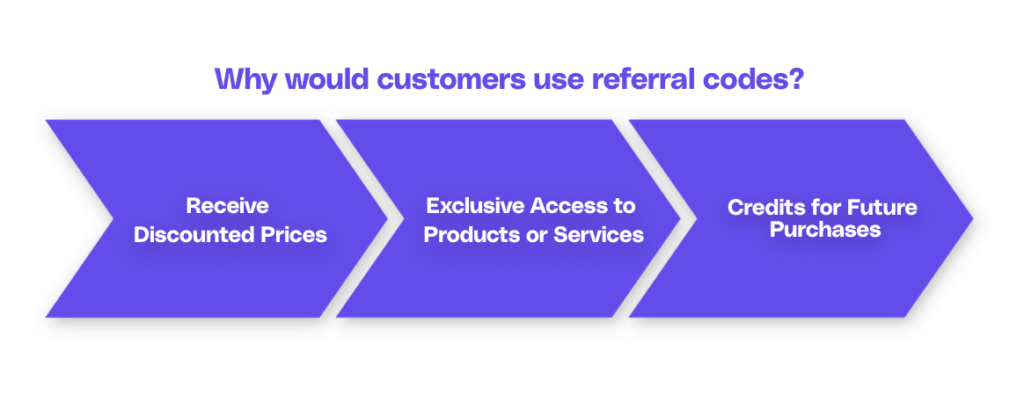Referral codes have become a popular marketing tool used by businesses to attract new customers and reward existing ones. Understanding the concept of a referral code is crucial for both businesses and customers alike. In this article, we will dive into the basics of referral codes, explore how they work, and examine their benefits. We will also address common misconceptions and discuss the future of referral codes in marketing.
| Key Element | Description | Tips for Optimization |
|---|---|---|
| Understanding the Concept of a Referral Code | A unique combination of numbers or letters used to track and identify customers referred to a business by existing customers. | Educate both businesses and customers on the purpose and benefits of referral codes. |
| The Mechanics of a Referral Code | Explains how referral codes work, including the process of sharing and using them. | Provide clear instructions for customers on how to share and redeem referral codes. |
| The Benefits of Using Referral Codes | Outlines the advantages of referral codes for both businesses and customers. | Highlight the benefits of referral codes in customer acquisition, loyalty building, and data-driven marketing. |
| Common Misconceptions | Addresses misunderstandings and myths surrounding referral codes. | Clarify misconceptions to ensure businesses and customers understand the value of referral codes. |
| The Future of Referral Codes | Discusses trends and advancements in referral marketing. | Stay updated on technological advancements and incorporate new trends to enhance referral marketing strategies. |
Understanding the concept of a referral code
The basics
At its core, a referral code is a unique combination of numbers, letters, or both that can be used to track and identify customers who are referred to a business by an existing customer.
When a new customer signs up or makes a purchase using a referral code, both the referrer and the new customer often receive incentives or rewards.
Referral codes are a key component of many businesses' marketing strategies. They serve as a way to reward loyal customers for spreading the word about the brand and bringing in new business.
These codes can vary in complexity, from simple alphanumeric strings to more intricate combinations that are harder to guess.
Purpose
The primary goal of referral codes is to encourage word-of-mouth marketing, leveraging the power of personal recommendations.
By providing customers with a unique code to share with their friends and family, businesses can tap into their existing customer base to attract new customers. This method is highly effective as people tend to trust recommendations from people they know.
Moreover, referral codes can help businesses track the success of their referral programs. By analyzing which codes are being used most frequently and by whom, companies can gain valuable insights into their customer base and tailor their marketing efforts accordingly.
This data-driven approach allows businesses to optimize their referral programs for maximum impact and return on investment.

The mechanics of a referral code
How they work
When a customer is given a referral code, they can share it with others through various channels, such as social media, email, or direct messaging. The code typically includes information that identifies the referrer and may also contain promotional incentives or discounts for the new customer.
Referral codes are a powerful marketing tool used by businesses to incentivize existing customers to refer new ones. By leveraging the networks and connections of their satisfied customers, companies can tap into new markets and expand their customer base organically.
This word-of-mouth marketing strategy not only helps in customer acquisition but also fosters loyalty among existing customers who are rewarded for their advocacy.
Key guidelines
There are some key aspects that must be considered when generating referral codes. These include:
- Uniqueness: Each referral code should be unique to the referrer to ensure accurate tracking and attribution of referrals. This uniqueness can be achieved through a combination of alphanumeric characters, ensuring that no two codes are the same.
- Identifiability: The referral code should contain information that allows the system to identify the referrer, such as a user ID or username. This ensures that the referrer receives proper credit for the referral.
- Ease of Use: Referral codes should be easy to generate and share. They should be short and memorable, or easy to find using referral tools. They should also be easily communicable across various channels, such as email, social media, or word of mouth.
- Validity Period: Setting a validity period for referral codes can create a sense of urgency and encourage timely use. This period could be defined by a specific time frame or linked to a promotional campaign.
- Trackability: Incorporating tracking mechanisms into the referral code system allows companies to monitor usage and analyze the effectiveness of the referral program. This allows businesses to measure key metrics such as conversion rates, customer acquisition costs, and ROI.
Different types of referral codes
Referral codes can vary in complexity and format, but they generally fall into a few common types.

Alphanumeric codes
These are combinations of letters and numbers that create unique codes, such as "ABC123" or "REF4567". Dropbox, for instance, offers cloud storage services and uses alphanumeric referral codes for its referral program.
Users can invite others to join Dropbox and earn extra storage space when their referrals sign up using their unique code.
QR codes
Quick Response (QR) codes are scannable images containing encoded information. They can be used as referral codes by encoding a unique identifier that links to a referral program.
HubSpot, a leading CRM and marketing platform, provides QR codes as part of its referral program. Users can generate QR codes within the platform and share them with others to earn rewards for successful referrals.
Referral links
Referral links are URLs that contain tracking parameters to identify the referrer. When clicked, they redirect users to a specific landing page where the referral code is applied automatically.
Slack, a popular team communication tool, utilizes URL links for its referral program. Users can generate unique referral links and share them via email, social media, or other channels.
When new users sign up through these links and become paying customers, both parties receive credits or discounts.
Custom codes
Some businesses create custom referral codes that are memorable or related to the brand or product, making them easier for customers to remember and share.
Canva, a graphic design platform, offers custom referral codes to its users. These personalized codes are easy to remember and share with friends or colleagues.
When new users sign up and upgrade to a paid plan using the referral code, both the referrer and the new user receive benefits such as free premium features or credits.
Mobile app integration
Referral codes can also be integrated into mobile apps, where users can share codes directly from within the app or apply them during the signup process.
Trello, a project management tool, integrates referral codes directly into its mobile app. Users can invite others to join Trello and collaborate on projects, with both parties receiving rewards such as additional boards or premium features when the referral is successful.
The process of using a referral code
Upon receiving a referral code, the new customer will enter it during the sign-up or purchase process on the business's website or app. Once the code is validated, both the referrer and the new customer can enjoy the associated benefits. These include discounts, credits, or other rewards.
It is essential for businesses to track and monitor the usage of referral codes to measure the effectiveness of their referral programs. Analyzing data related to referral code usage can provide valuable insights into customer behavior, preferences, and the overall success of the referral campaign.
This data-driven approach allows companies to optimize their referral strategies, identify top-performing referrers, and tailor incentives to maximize the impact of their referral programs.

(Source: G2)
Benefits
Advantages for businesses
Implementing a referral code program can bring several advantages to businesses.

(Source: Cello)
- First, it can increase customer acquisition by leveraging the network of existing customers. This network effect can lead to a snowball effect where satisfied customers refer more customers. This creates a self-sustaining cycle of growth.
- Second, these codes help in building customer loyalty as both the referrer and the new customer are rewarded, fostering a sense of community and trust around the brand.
- Additionally, by tracking the codes, businesses can gather valuable data on customer behavior and preferences, enabling them to tailor their marketing strategies more effectively.
- Finally, referral marketing can lead to increased sales and revenue without substantial marketing costs, making it a cost-effective strategy for businesses of all sizes.
Moreover, businesses can use referral codes as a way to tap into new markets or demographics that they may not have reached through traditional marketing channels. By incentivizing existing customers to refer their friends and family, businesses can expand their customer base and reach a wider audience.
This not only helps in increasing brand awareness but also allows businesses to establish a more personal connection with customers. This leads to higher customer lifetime value and repeat purchases.
Advantages for customers
Customers who use referral codes can also enjoy various benefits.

By using a referral code, they can:
- Receive discounted prices.
- Get exclusive access to products or services.
- Earn credits toward future purchases.
This not only provides customers with tangible benefits but also enhances their overall shopping experience, making them feel valued and appreciated by the brand. Furthermore, customers can feel a sense of satisfaction in sharing a great product or service with others and being rewarded for it. This fosters a sense of community and camaraderie among customers.
Additionally, referral codes can act as a form of social currency, where customers can showcase their insider status or exclusive deals to their social circle. This further strengthens their relationship with the brand.
Common misconceptions
Clearing up confusion
There are some common misunderstandings surrounding referral codes that need to be addressed. One misconception is that they are only used in specific industries or online platforms. In reality, these codes can be implemented by businesses across various sectors, both online and offline.
Debunking myths
Another common myth is that referral codes are only beneficial for businesses and that customers get nothing in return. However, as mentioned earlier, customers using them can unlock discounts, earn rewards, and enjoy exclusive perks. These codes create a win-win situation for both businesses and customers.
Future outlook
Trends in referral marketing
As technology evolves, the use of referral codes is also evolving. Businesses are incorporating more advanced tracking systems to measure the success of their referral programs accurately.
Additionally, referral marketing is expanding beyond traditional methods, with influencer marketing and social media playing a significant role.
The evolution of referral codes
Referral codes are a valuable marketing strategy, and their relevance will likely grow in the future. With advancements in data analytics and personalization, businesses can tailor referral programs to meet the specific needs and preferences of their customers. This further enhances the effectiveness of referral marketing.

In conclusion, referral codes play a vital role in modern marketing strategies. Their purpose is to encourage customers to refer their friends and family to businesses. This ultimately benefits both the referrer and the new customer.
By understanding the mechanics, benefits, and common misconceptions surrounding referral codes, businesses and customers can fully leverage their potential. As referral marketing continues to evolve, embracing new trends and technologies will ensure its continued success in the future.
Unlock your SaaS product's growth potential with Cello
Ready to transform your users into a powerful growth engine for your SaaS product? Cello is here to make it happen. With our peer-to-peer referral program, you can easily incentivize your users to share your product, turning their enthusiasm into your success. Experience seamless integration, automated rewards, and real-time performance tracking—all with minimal development time and a success-based pricing model. Discover how Cello can amplify your user-led growth and integrate effortlessly with your existing tools. Don't miss out on the opportunity to see how Cello can revolutionize your referral marketing. Book a demo today and witness the power of user referrals in action.
Resources
Related Articles

Best Referral Software for SaaS with Chargebee Integration: The Definitive Guide to Revenue Attribution
The Strategic Convergence of Billing and User-Led Growth In the contemporary landscape of B2B ...

Automating Stripe Referral Tracking: A Cello Integration Guide
Scaling a referral program manually is impossible. The integration between Cello and Stripe ...

